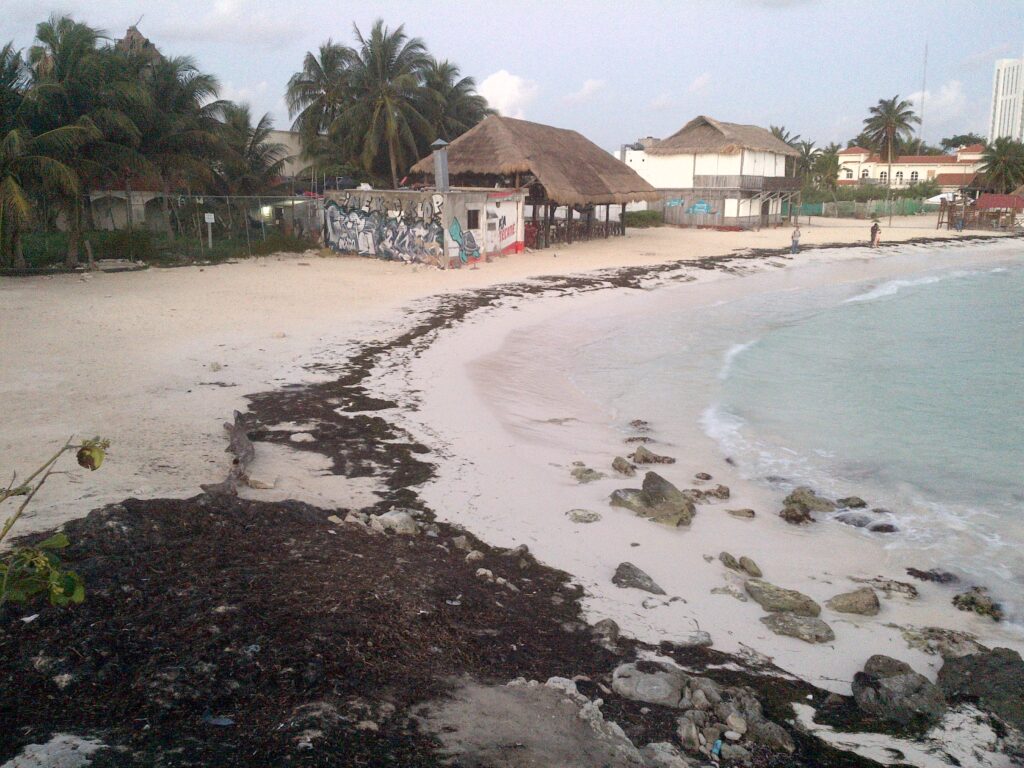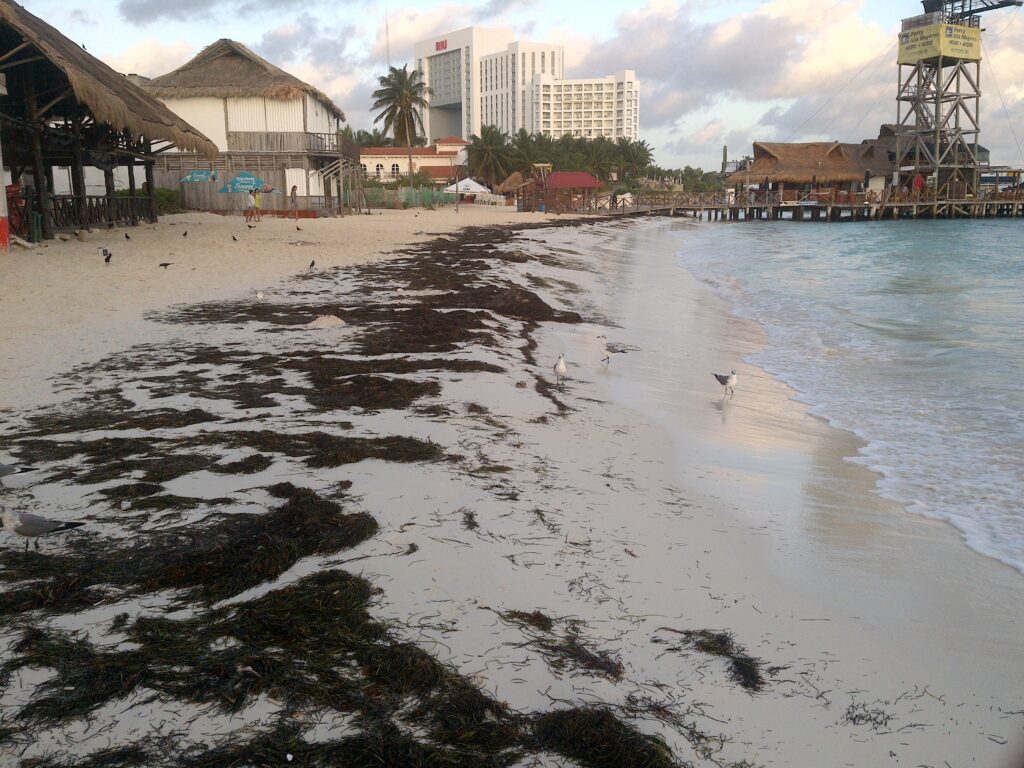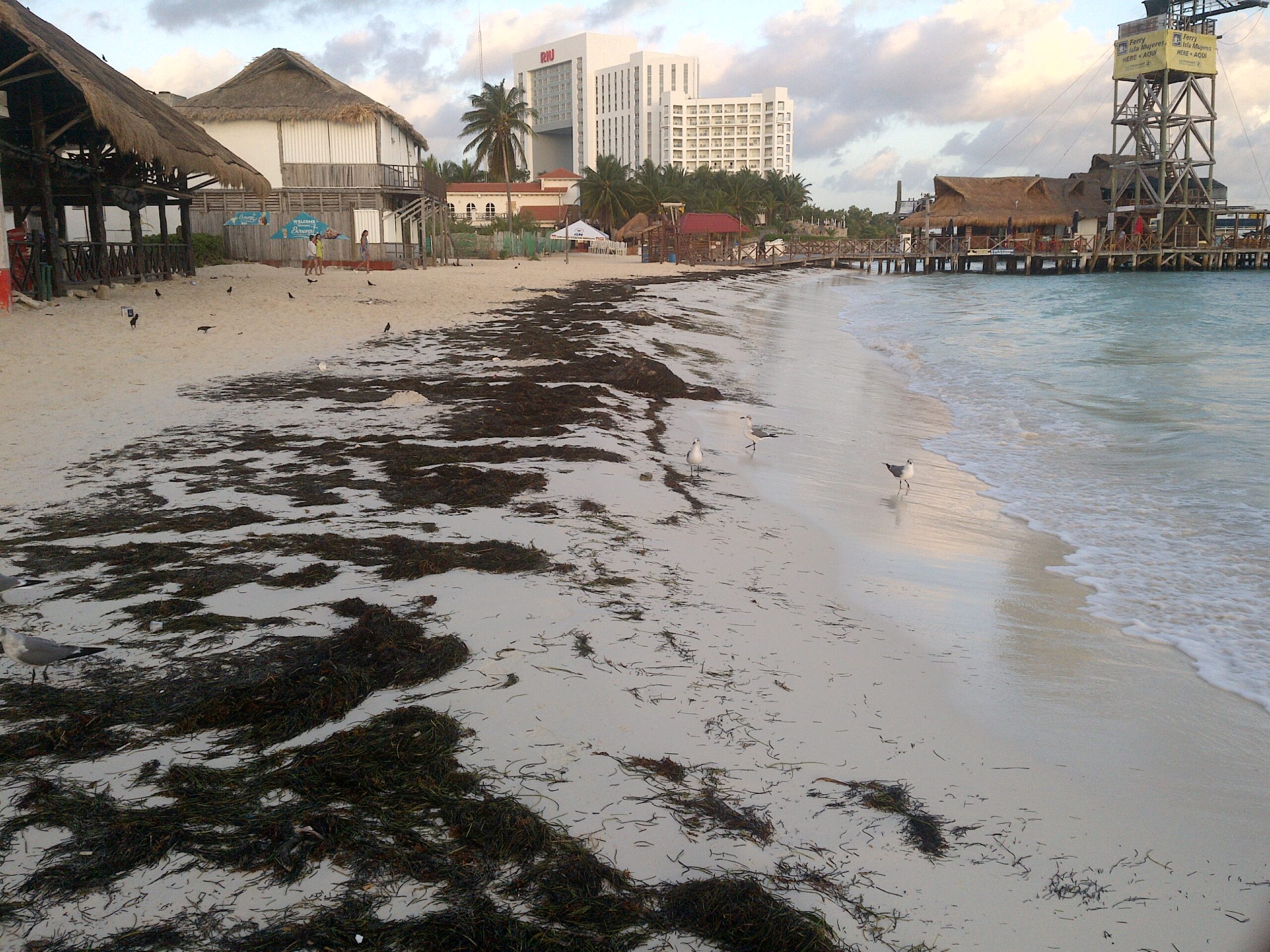- 1Department of Observation and Study of the Land, the Atmosphere and the Ocean, Consejo Nacional de Humanidades Ciencias y Tecnologías-El Colegio de la Frontera Sur (CONAHCYT-ECOSUR), Chetumal, Quintana Roo, Mexico
- 2Department of Observation and Study of the Land, the Atmosphere and the Ocean, El Colegio de la Frontera Sur, Chetumal, Quintana Roo, Mexico
- 3Unidad Académica de Sistemas Arrecifales-Puerto Morelos, Instituto de Ciencias del Mar y Limnología, Universidad Nacional Autónoma de México, Puerto Morelos, Quintana Roo, Mexico
Massive arrivals of pelagic Sargassum to the coasts of several countries in the Atlantic Ocean began in 2011. Monitoring the abundance and distribution of Sargassum in the ocean and along the coasts is necessary to understand the phenomena better and develop forecasting products and management protocols. Most Sargassum monitoring has been conducted in the open ocean through traditional remote sensing techniques. However, since the most significant ecologic and socioeconomic impacts occur on the coasts, it is necessary to monitor these macroalgae on nearshore waters and beaches. This manuscript reviews the remote sensing algorithms used in Sargassum observation reported in the last 17 years in more than sixty high-impact scientific publications. The discussion regarding the evolution of the methodologies used for monitoring these macroalgae allowed us to conclude that the synergy generated by incorporating new disciplines like artificial intelligence and citizen science has positively impacted the development of this field. Additionally, the current state-of-the-art methods, the fundamental challenges, and the directions for future research are also discussed.


Frontiers | Algorithms applied for monitoring pelagic Sargassum (frontiersin.org)




